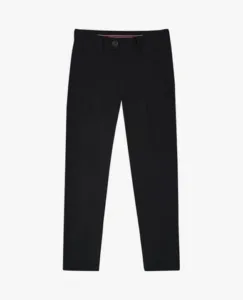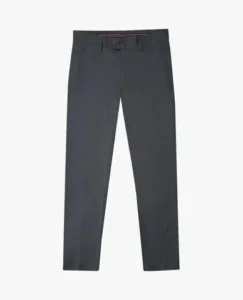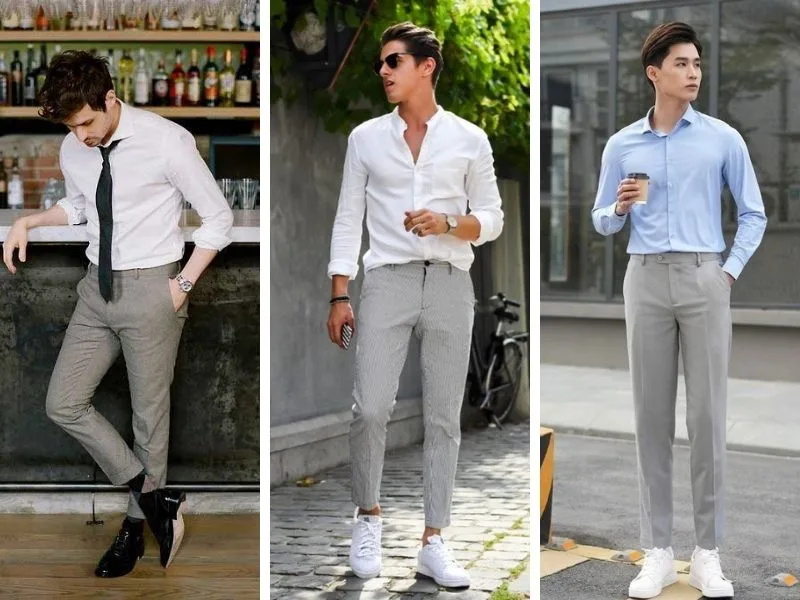news
The Modern Men’s Wardrobe: From Uniformity to Individuality
Fashion for men has undergone a monumental shift in recent decades, moving away from a rigid, uniform aesthetic to one that celebrates individual expression. For centuries, a man’s clothing was a clear indicator of his social status, profession, and position in society, with strict rules dictating what was acceptable. Today, the modern male wardrobe is a dynamic and versatile landscape, a rich tapestry of influences that allows for unprecedented freedom of personal style. This comprehensive guide will explore the key elements of this transformation, delving into how men’s fashion has embraced comfort, rejected outdated norms, and adopted a more global, fluid perspective. We will examine the essential garments that form the foundation of this new approach to style and discuss how they are used to create a look that is both authentic and contemporary.
The revolution in men’s fashion is, in large part, a reflection of broader societal changes. The rise of the casual workplace has dismantled the traditional suit-and-tie uniform, making way for more relaxed silhouettes and a wider palette of colors and textures. Remote work has further accelerated this trend, with comfort and versatility becoming key drivers of sartorial choice. Furthermore, the advent of social media has democratized fashion, exposing men to a global array of styles and trends. This has empowered them to move beyond the confines of their local culture and experiment with different aesthetics, from the minimalist elegance of Scandinavian design to the bold, structured silhouettes of Japanese streetwear. The result is a vibrant and dynamic landscape where a man’s clothing is a true reflection of his personality, his interests, and his lifestyle.
![]()
The menswear industry has responded to this demand for individuality by offering a far wider range of fits, fabrics, and designs than ever before. Brands are no longer focused on a single ideal silhouette; instead, they cater to a diverse range of body types and personal preferences. This includes the introduction of innovative hybrid garments that blur the lines between traditional categories, such as the shacket (a fusion of a shirt and a jacket) and the smarter jogger (combining the comfort of athletic wear with the polish of a casual trouser). The modern male wardrobe is a testament to this versatility, housing a blend of sharp, tailored pieces for formal occasions and relaxed, comfortable everyday wear that seamlessly transitions between different parts of a man’s life.
The Rise of Athleisure and Hybrid Garments
One of the most significant trends shaping modern men’s fashion is the rise of athleisure. This is a style that blurs the lines between athletic wear and casual clothing, driven by a global shift towards comfort and a more active lifestyle. It’s no longer uncommon to see men wearing performance-driven clothing like tailored sweatpants, designer sneakers, and moisture-wicking polos in everyday settings, including casual offices, social events, and even on dates. This trend has not only made clothing more comfortable but has also introduced new technical fabrics into the mainstream, offering benefits like stretch, breathability, and wrinkle resistance. The smarter jogger, for instance, is a perfect example of this fusion, offering the tapered fit and elasticated cuffs of a track pant but made from a structured, dressy fabric that can be paired with a button-down shirt or a blazer. This type of garment is highly practical for a man who wants to look put-together while remaining comfortable and mobile throughout the day.
Similarly, the shacket has emerged as a versatile layering piece. It’s a garment that has the button-front and collar of a shirt but is made from a heavier fabric like wool, corduroy, or thick cotton, giving it the structure and warmth of a light jacket. This hybrid piece is perfect for transitional weather and can be styled in multiple ways: worn as a stand-alone shirt, layered over a T-shirt or hoodie, or even under a heavier coat for added warmth. The shacket’s popularity lies in its simplicity and functionality, demonstrating how modern menswear is prioritizing items that can serve multiple purposes and be worn in a variety of settings. The rejection of rigid dress codes has made room for these innovative garments that prioritize comfort without sacrificing style.
The Essential T-Shirt and Polo
At the core of the casual male wardrobe are two simple yet essential garments: the T-shirt and the polo shirt. The T-shirt, once an undergarment for the military, has become a global icon of casual comfort and rebellion. Its simplicity is its strength; it is a blank canvas for self-expression, whether worn in a plain white for a minimalist look, or adorned with a graphic print that reflects a man’s interests. The T-shirt is a testament to the power of democratic fashion, a piece of clothing that is universally accessible and infinitely customizable. It serves as the foundation for countless outfits, from a simple jeans-and-tee combination to a layered look under a blazer or a cardigan. The fit of a T-shirt is crucial, and brands now offer a wide range of cuts, from slim-fit to oversized, ensuring that every man can find a style that flatters his body type.
The polo shirt, with its collar and buttons, offers a slightly more elevated alternative to the T-shirt. It sits comfortably in the smart casual category, bridging the gap between a T-shirt and a dress shirt. The polo’s history is rooted in sport, making it a timeless symbol of relaxed athleticism and effortless style. It can be paired with chinos for a classic look or with tailored trousers for a more modern, polished aesthetic. The polo’s versatility makes it a must-have in any man’s wardrobe, as it can be worn in a variety of settings, from a casual office environment to a weekend outing. The choice of fabric, from a classic cotton pique to a modern, technical blend, further adds to its versatility, offering options that are both stylish and practical for different climates and activities.

The New Rules of Fit and Fabric
One of the most significant shifts in modern menswear is the focus on fit and fabric. The days of baggy, ill-fitting clothes are over. The modern man understands that a proper fit is the key to looking polished and confident, regardless of the style. Brands now offer clothing in a variety of fits—from slim and athletic to relaxed and straight—allowing a man to find the silhouette that best complements his body. This focus on fit has also led to a resurgence of tailoring, with many men opting to have their clothing altered to ensure a perfect look. A well-fitting garment not only looks better but also feels more comfortable and moves with the body more naturally.
The choice of fabric has also become a critical consideration. Beyond aesthetics, men are now looking for materials that offer comfort, durability, and functionality. Cotton remains a staple, but it is now available in a variety of weaves, from the classic oxford to the lightweight seersucker. Wool is no longer just for suits; it is used in everything from casual trousers to soft, breathable T-shirts. The rise of new synthetic blends and technical fabrics has also revolutionized the market, offering clothing that is wrinkle-resistant, moisture-wicking, and stretchable. These materials are perfect for the modern man who is constantly on the go and needs clothing that can keep up with his active lifestyle. The investment in high-quality fabrics and a proper fit is a reflection of a man’s appreciation for craftsmanship and his desire for clothing that is both stylish and long-lasting.
The Interplay of Accessories
In modern menswear, accessories play a crucial role in elevating an outfit and adding a touch of personal flair. A simple look of a shirt and trousers can be completely transformed with the addition of a few key accessories. A quality watch, for example, is more than just a timepiece; it is a statement of style and a reflection of a man’s taste. A classic leather-strap watch can add a touch of timeless elegance, while a modern dive watch can give an outfit a more rugged, adventurous feel.
Similarly, belts are not just functional; they are an opportunity to add a finishing touch to an outfit. A simple leather belt can tie together a pair of chinos and a button-down shirt, while a woven or fabric belt can add a pop of color and texture to a casual look. Socks have also become a canvas for self-expression, with men now experimenting with bold patterns and colors to add a subtle touch of personality to their style.
Finally, footwear is a critical component of any outfit. The right pair of shoes can make or break a look. The modern man’s shoe collection is diverse, ranging from classic leather dress shoes and polished loafers for formal occasions to casual sneakers and rugged boots for everyday wear. The rise of designer sneakers has blurred the lines between casual and high fashion, with many men now pairing sneakers with everything from jeans to tailored trousers. The key is to choose footwear that not only matches the style of the outfit but also reflects the man’s personal aesthetic and lifestyle.

In conclusion, the modern men’s wardrobe is a far cry from the rigid, uniform style of the past. It is a world of versatility, individuality, and self-expression, where a man’s clothing is a reflection of his personality and his life. The revolution in men’s fashion is driven by a desire for comfort, a rejection of outdated norms, and an appreciation for high-quality fabrics and a perfect fit. The essential garments like the shirt and trousers have been reimagined in a multitude of forms, each with its own purpose and cultural significance. As men continue to embrace a more fluid and personal approach to style, the future of menswear looks more exciting and diverse than ever before.

